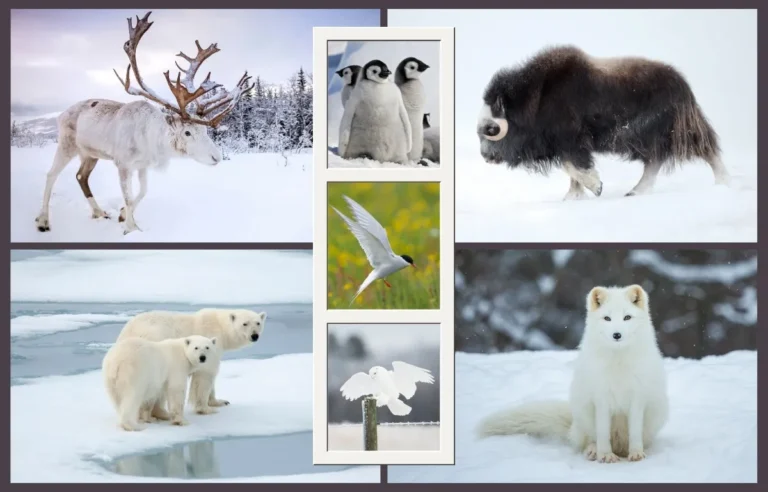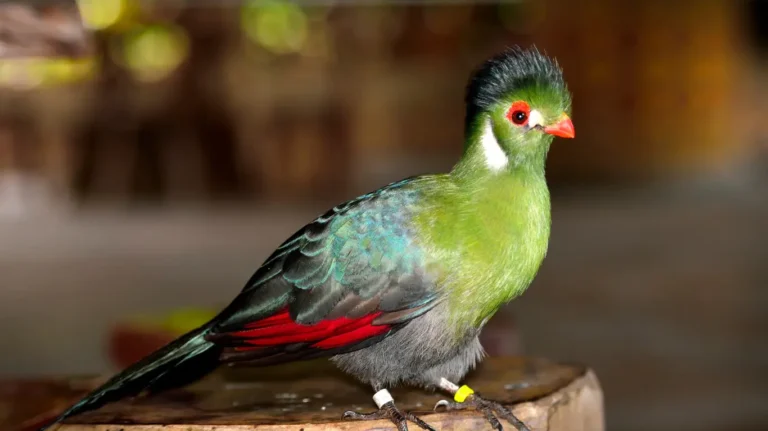8 of the beautiful Natural Wonders
The planet is full of extraordinary landscapes that captivate and inspire. From towering mountains to deep canyons and shimmering waters to dancing lights in the sky, Earth’s beauty is beyond measure. As travel becomes more accessible, discovering nature’s wonders should be on every adventurer’s bucket list. But it’s not just about ticking off destinations—it’s about experiencing the world responsibly and understanding the importance of protecting these environments. Along the way, immerse yourself in local cultures, sample unique cuisine, and engage in eco-friendly practices that help preserve these wonders for future generations.
Whether you’re looking to hike through dramatic landscapes, explore vast coral reefs, or simply bask in the grandeur of untouched nature, we’ve curated a list of seven must-visit natural wonders that will take your breath away. Pack your bags as we journey through the globe’s most stunning sites, each offering its unique allure.
1. The Northern Lights, Norway: A Celestial Light Show

The Northern Lights, or Aurora Borealis, are one of Earth’s most mesmerizing natural phenomena. Best viewed from the Arctic Circle, particularly in Norway, these ethereal lights dance across the night sky, casting green, pink, and violet hues. This light show occurs when solar particles interact with Earth’s magnetic field, creating a cosmic spectacle that feels almost otherworldly.
While the Northern Lights are a bucket-list experience, they’re also deeply rooted in local Sami culture. According to legend, the lights are the souls of ancestors or celestial spirits. Travelers can join guided tours led by locals to experience this light show in the most culturally immersive way possible.
For those looking to reduce their environmental impact while traveling, eco-friendly accommodation is recommended. Many lodges near Tromsø offer green-certified stays. Safety is also important—dress warmly and stay informed about weather conditions before venturing out to view this natural wonder.
| Feature | Details |
|---|---|
| Specific Location | Tromsø, Norway (69.6496° N, 18.956) |
| Nearby Attractions | – Tromsø Arctic-Alpine Botanic Garden – Fjellheisen Cable Car – Arctic Cathedral – Whale Watching Tours |
| Flora | – Arctic willow – Norwegian mountain avens – Various lichens and mosses |
| Fauna | – Reindeer – Arctic fox – Puffins – Various migratory bird species |
| Best Time to Visit | September to March (highest chance of clear skies and Northern Lights sightings) |
| Key Statistics | Tromsø is located 350 km north of the Arctic Circle |
| Fun Fact | The Northern Lights have been visible as far south as Italy. 🌌 |
| Conservation Efforts | Northern Lights tourism promotes low-impact activities like eco-friendly dog sledding. |
2. The Grand Canyon, USA: Nature’s Vast Masterpiece
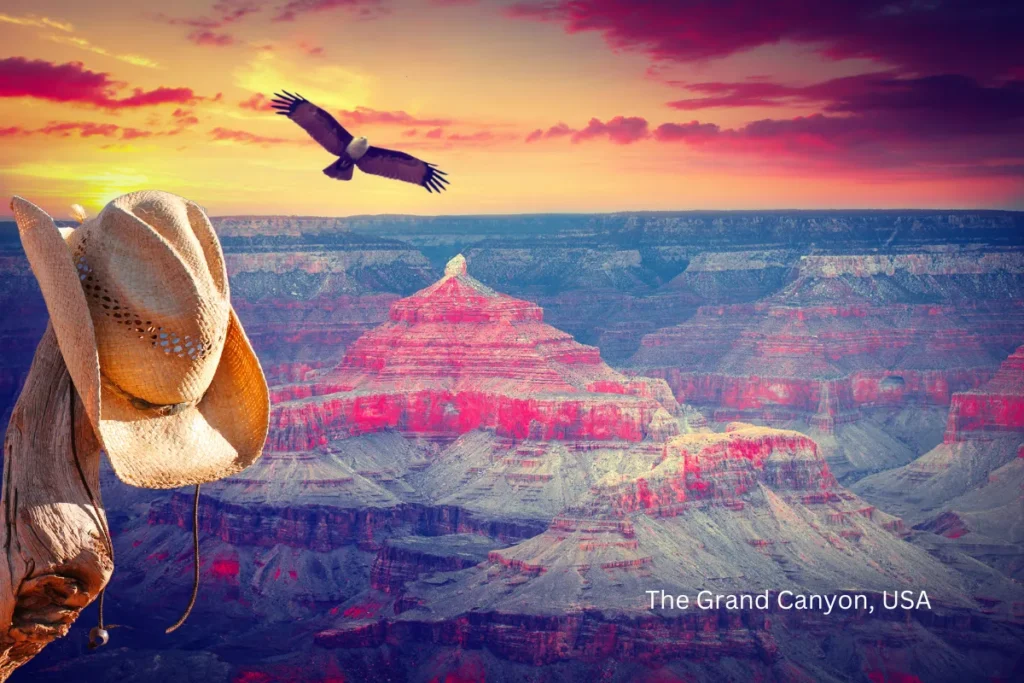
The Grand Canyon in Arizona is one of the most iconic natural wonders, stretching over 277 miles. Carved by the Colorado River over millions of years, the canyon’s layered rock formations reveal Earth’s geological history in vivid color.
The Grand Canyon is also home to unique flora and fauna, including rare plant species like the Grand Canyon Pink Rattlesnake, which is only found in this region. Visitors can choose from various activities, including rafting down the Colorado River or hiking along the less-traveled North Rim.
Accommodation near the South Rim ranges from rustic campsites to luxurious lodges. For a more immersive experience, opt for eco-friendly accommodations and tours that support the conservation of the canyon’s fragile ecosystem. The canyon is also a sacred site for the Havasupai people, who have inhabited the area for centuries.
| Feature | Details |
|---|---|
| Specific Location | Grand Canyon Village, Arizona, USA (36.1069° N, 112.1129° W) |
| Nearby Attractions | – Grand Canyon Skywalk – Havasu Falls – Antelope Canyon – Glen Canyon Dam |
| Flora | – Ponderosa pine – Yucca – Desert wildflowers (like the California poppy) |
| Fauna | – California condor – Desert bighorn sheep – Mule deer – Various species of lizards and snakes |
| Best Time to Visit | March to May, September to November (moderate weather, fewer crowds) |
| Key Statistics | Over 5.9 million visitors annually; spans 1,904 square miles |
| Fun Fact | The Grand Canyon is home to endangered species like the California condor. 🦅 |
| Conservation Efforts | Park management focuses on reducing light pollution to preserve the night sky. |
3. Great Barrier Reef, Australia: The World’s Largest Coral Ecosystem

Stretching over 1,400 miles, the Great Barrier Reef is the world’s largest coral reef system, home to thousands of marine species. It’s a paradise for snorkelers and divers, where you can explore vibrant coral gardens and swim with exotic creatures like sea turtles and manta rays.
However, the reef is under severe threat due to climate change and coral bleaching. In response, several conservation organizations are working to restore damaged reefs. Visitors are encouraged to choose eco-certified tour operators that prioritize sustainable tourism practices.
After a day of diving, enjoy fresh seafood dishes in nearby Cairns, a popular entry point for reef exploration. The local food scene is influenced by indigenous Australian ingredients and coastal flavors, offering a culinary experience that complements your underwater adventure.
| Feature | Details |
|---|---|
| Specific Location | Port Douglas, Queensland, Australia (16.4876° S, 145.4633° E) |
| Nearby Attractions | – Daintree Rainforest – Mossman Gorge – Kuranda Scenic Railway – Fitzroy Island |
| Flora | – Coral species (over 400 types) – Seagrasses – Mangroves (such as Avicennia marina) |
| Fauna | – Green sea turtles – Clownfish – Manta rays – Various coral reef fish (over 1,500 species) |
| Best Time to Visit | June to October (dry season with calm waters) |
| Key Statistics | The reef covers 133,000 square miles |
| Fun Fact | The Great Barrier Reef is visible from space. 🐠 |
| Conservation Efforts | Reef-safe sunscreen and marine protection laws help conserve the ecosystem. |
4. Mount Everest, Nepal: The World’s Tallest Peak

Mount Everest, at 29,032 feet, is the tallest mountain on Earth. Located in the Himalayas, it has long been a symbol of human endurance and adventure. While summiting Everest may be reserved for the world’s most experienced climbers, the region offers stunning trekking routes like the Everest Base Camp trek.
The Khumbu region is home to Sherpa communities and Buddhist monasteries, adding a rich cultural layer to your adventure. Along the trek, stop at local teahouses to sample Nepalese cuisine, such as dal bhat (a traditional lentil and rice dish) and butter tea, a high-altitude energy drink.
For safety, it’s essential to acclimatize properly to avoid altitude sickness, and hiring an experienced guide is recommended. The mountain is also vulnerable to the impact of mass tourism, so choosing eco-friendly trekking companies helps minimize your environmental footprint.
| Feature | Details |
|---|---|
| Specific Location | Port Douglas, Queensland, Australia (16.4876° S, 145.4633° E) |
| Nearby Attractions | – Daintree Rainforest – Mossman Gorge – Kuranda Scenic Railway – Fitzroy Island |
| Flora | – Coral species (over 400 types) – Seagrasses – Mangroves (such as Avicennia marina) |
| Fauna | – Green sea turtles – Clownfish – Manta rays – Various coral reef fish (over 1,500 species) |
| Best Time to Visit | June to October (dry season with calm waters) |
| Key Statistics | The reef covers 133,000 square miles |
| Fun Fact | The Great Barrier Reef is visible from space. 🐠 |
| Conservation Efforts | Reef-safe sunscreen and marine protection laws help conserve the ecosystem. |
5. Amazon Rainforest, South America: The Lungs of the Earth
The Amazon Rainforest covers 2.1 million square miles and spans nine countries, making it the largest tropical rainforest on Earth. It’s home to over 390 billion trees and countless species, many of which remain undiscovered.
For wildlife enthusiasts, eco-tours offer a sustainable way to explore this biodiverse region. Spot jaguars, sloths, and pink river dolphins while contributing to conservation efforts. Indigenous communities, who have lived in harmony with the rainforest for centuries, often serve as guides, providing insights into sustainable living and the medicinal properties of Amazonian plants.
Accommodation options include eco-lodges built using sustainable materials and practices that help protect the rainforest. To ensure your trip is memorable and responsible, consider joining guided tours that preserve the Amazon’s delicate ecosystems.
| Feature | Details |
|---|---|
| Specific Location | Manaus, Amazonas, Brazil (3.1342° S, 60.0217° W) |
| Nearby Attractions | – Meeting of Waters (Rio Negro and Solimões) – Anavilhanas National Park – Jaú National Park – Parque Nacional de Anavilhanas |
| Flora | – Brazil nut tree – Rubber tree – Orchids (over 25,000 species) – Giant water lily |
| Fauna | – Jaguars – Sloths – Amazon river dolphins – Various species of toucans and macaws |
| Best Time to Visit | July to December (dry season with easier access) |
| Key Statistics | The Amazon rainforest spans over 5.5 million square kilometers |
| Fun Fact | The Amazon is home to approximately 390 billion individual trees. 🌳 |
| Conservation Efforts | Initiatives focus on sustainable tourism and protecting indigenous land rights. |
6. Victoria Falls, Zambia/Zimbabwe: The Smoke That Thunders
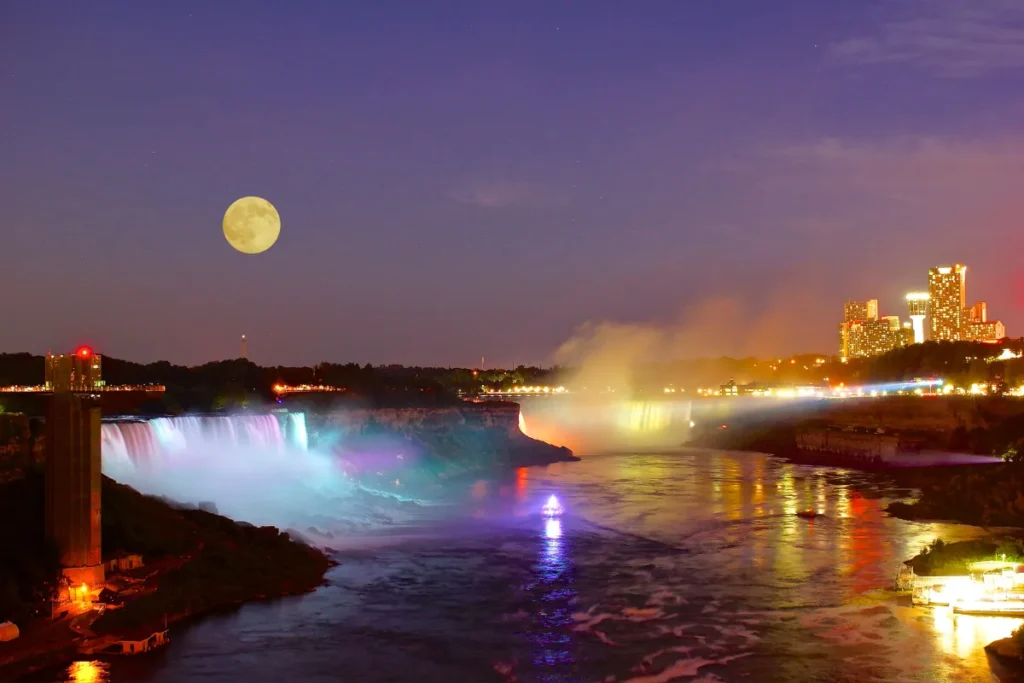
Victoria Falls, also known as Mosi-oa-Tunya (The Smoke That Thunders), is one of the largest and most awe-inspiring waterfalls on the planet. It spans 1.7 kilometers and drops over 100 meters, creating a mist that can be seen from miles away.
For adrenaline seekers, Victoria Falls offers adventure activities like bungee jumping and white-water rafting. But the region is also rich in wildlife, with game drives available in nearby national parks where you can see elephants, lions, and more.
Accommodation near the falls ranges from budget-friendly lodges to luxury resorts. The region emphasizes sustainable tourism practices, and many tours contribute to wildlife conservation efforts. Visiting local villages offers an opportunity to experience Zimbabwean and Zambian cultures firsthand.
| Feature | Details |
|---|---|
| Specific Location | Victoria Falls, Zambia/Zimbabwe (17.9243° S, 25.8563° E) |
| Nearby Attractions | – Zambezi National Park – Chobe National Park – Livingstone Island – Devil’s Pool |
| Flora | – Mahogany trees – Mopane trees – Various wildflowers – Lianas and ferns |
| Fauna | – African elephants – Lions – Hippos – Diverse bird species including the African fish eagle |
| Best Time to Visit | February to May (full flow of the falls) |
| Key Statistics | The falls are approximately 1,708 meters wide and 108 meters high |
| Fun Fact | Victoria Falls is one of the Seven Natural Wonders of the World. 🌊 |
| Conservation Efforts | The Zambezi River Authority manages water flow to sustain the falls and surrounding ecosystems. |
7. Lanai, Hawaii: The Island of Adventure and Tranquility
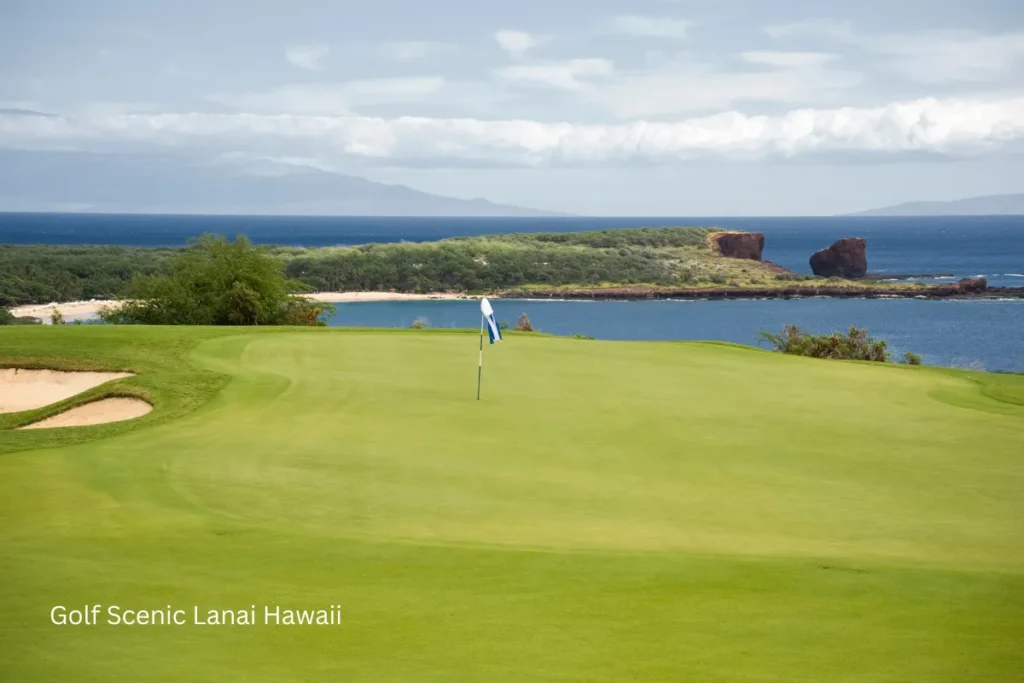
Lanai is Hawaii’s smallest inhabited island, known for its rugged landscapes, secluded beaches, and rich cultural history. Unlike the more bustling islands, Lanai offers a peaceful retreat where visitors can connect with nature.
Adventurers can explore Keahiakawelo, also known as the Garden of the Gods, which has red-rock formations and panoramic views. For marine lovers, Hulopoe Bay offers excellent snorkeling opportunities with vibrant coral reefs and spinner dolphins. Lanai’s commitment to sustainable tourism is evident through reef protection initiatives and eco-friendly travel options.
Lanai’s isolation provides an unmatched tranquility, but it’s also steeped in history. Once a major pineapple producer, the island is now owned by billionaire Larry Ellison, who has spearheaded efforts to make it a model for sustainable luxury travel.
Here’s the table for Lanai, Hawaii:
| Feature | Details |
|---|---|
| Specific Location | Lanai Island, Hawaii, USA (20.8283° N, 156.9270° W) |
| Nearby Attractions | – Hulopoe Bay: Famous for its pristine beach and marine life, perfect for snorkeling. – Shipwreck Beach: Known for its rugged coastline and a shipwreck visible offshore. – Garden of the Gods: A unique landscape of rock towers and boulders. |
| Flora | – Koa Trees: Native to Hawaii, prized for their beautiful wood. – Ironwood Trees: Found across the island, particularly along the beaches. – Endemic Wildflowers: Includes species like the Hawaiian hibiscus and naupaka. |
| Fauna | – Hawaiian Monk Seal: An endangered species that occasionally visits the shores of Lanai. – Spinner Dolphins: Frequently seen in Hulopoe Bay. – Mongoose: Introduced species commonly seen on the island. – Birds: Lanai is home to endemic birds like the ‘Apapane and the Pueo (Hawaiian owl). |
| Best Time to Visit | – Winter (December to February): Cooler weather, ideal for outdoor activities. – Spring (March to May): Fewer tourists and pleasant weather. – Summer (June to August): Warm, sunny weather but higher tourist numbers. |
| Key Statistics | – Area: 140 square miles (364 square kilometers). – Elevation: Lanaihale, the highest point on the island, reaches 3,366 feet (1,026 meters). |
| Fun Fact | – Pineapple Island: Lanai was once the world’s largest pineapple plantation, owned by Dole. 🍍 |
| Conservation Efforts | – Efforts focus on habitat preservation and protecting endangered species, especially coastal and marine ecosystems. – Sustainable tourism initiatives include controlled access to sensitive areas like Hulopoe Bay to minimize human impact. |
8. Wadi Rum, Jordan: Valley of Moon

Wadi Rum, Jordan, is a majestic desert valley also known as the “Valley of the Moon.” Its breathtaking landscapes are characterized by towering red sandstone mountains, vast dunes, and narrow canyons. Carved by millennia of natural erosion, Wadi Rum offers a rugged and otherworldly beauty, making it a popular destination for adventure seekers and nature lovers. Visitors can explore the area’s unique rock formations, ancient petroglyphs, and historical sites like Lawrence’s Spring, tied to T.E. Lawrence’s legacy.
Wadi Rum is not only renowned for its stunning geography but also its vibrant Bedouin culture. Local Bedouins have called this desert home for centuries, offering hospitality to travelers with camel rides, jeep tours, and overnight stays in traditional camps. The clear night skies provide an ideal setting for stargazing, adding to the magical experience. With its rich history, cultural heritage, and dramatic scenery, Wadi Rum is a must-visit destination for those exploring Jordan
| Feature | Details |
|---|---|
| Specific Location | Wadi Rum, Aqaba Governorate, Jordan (29.5320° N, 35.4210° E) |
| Nearby Attractions | – Acacia Trees: Thrives in the desert and provide animal shade and sustenance. – Tamarisk Shrubs: Hardy plants that survive arid conditions. – Desert Grasses: Sparse but vital for the ecosystem. |
| Flora | – Acacia Trees: Thrives in the desert and provides animal shade and sustenance. – Tamarisk Shrubs: Hardy plants that survive arid conditions. – Desert Grasses: Sparse but vital for the ecosystem. |
| Fauna | – Arabian Oryx: A rare and iconic desert species. – Nubian Ibex: Wild mountain goats adapted to rocky desert terrain. – Sand Cats: Elusive felines that blend into the desert environment. – Birds of Prey: Eagles, falcons, and vultures soar above the cliffs. |
| Best Time to Visit | – Spring (March to May): Mild temperatures, wildflowers bloom. – Fall (September to November): Cooler weather, ideal for exploring the desert landscapes. |
| Key Statistics | – Area: Covers over 720 square kilometers. – UNESCO World Heritage Site designation in 2011. |
| Fun Fact | – Known as the “Valley of the Moon,” Wadi Rum has been used as a filming location for movies like The Martian and Lawrence of Arabia. |
| Conservation Efforts | – Conservation initiatives focus on protecting the desert ecosystem and maintaining the Bedouin way of life, including sustainable tourism programs and habitat preservation. |
Conclusion: Experience Earth’s Wonders, Responsibly
Traveling the world offers endless rewards, but as we explore these breathtaking destinations, we must do so with respect and responsibility. From hiking in the Grand Canyon to snorkeling in the Great Barrier Reef, remember that these natural wonders need our care. Support local communities, embrace eco-friendly practices, and help ensure that these wonders remain pristine for future generations.
Which of these natural wonders will you visit next? Share your travel plans and inspirations with us in the comments below. And if you’re ready to start your journey, subscribe to our newsletter for exclusive travel tips and eco-friendly destination guides!
From breathtaking geological formations to mesmerizing light shows in the sky, the world’s natural wonders are destinations that captivate and inspire travelers. Whether you’re an adventure seeker, a nature lover, or simply looking to add some must-visit destinations to your bucket list, these seven locations offer awe-inspiring beauty and unforgettable experiences.
FAQS
1. How is Yellowstone’s supervolcano monitored, and should visitors be concerned about an eruption?
The Yellowstone supervolcano is closely monitored by the Yellowstone Volcano Observatory, which tracks seismic activity, ground deformation, gas emissions, and thermal features. While it has the potential for a large eruption, there are no signs of imminent danger, and scientists estimate that such an event is highly unlikely shortly. Visitors should not be concerned, as the park is well-prepared and constantly surveilled for any unusual activity.
2. What makes the geology of Lanai unique compared to other Hawaiian Islands?
Lanai’s geology is largely shaped by its volcanic origin, but it lacks the massive volcanic features seen on nearby islands like Maui and the Big Island. The island’s defining feature, Lanaihale, a now dormant shield volcano, is much smaller, giving Lanai a more eroded and weathered landscape. The red volcanic rock of Keahiakawelo (Garden of the Gods) is one of its most unusual geological attractions, offering an otherworldly terrain caused by erosion rather than lava flows.
3. How do Yellowstone’s geothermal features differ from those found in other parts of the world?
Yellowstone’s geothermal features, particularly its geysers and hot springs, are unique because the park contains more than half of the world’s active geysers, including Old Faithful, the most famous. The high concentration of these geothermal features is due to the park’s location above a supervolcano. While geothermal activity occurs elsewhere, such as in Iceland and New Zealand, Yellowstone’s combination of geysers, hot springs, mudpots, and fumaroles is unparalleled in scale and diversity.
4. What are the most effective conservation efforts currently in place in Lanai to protect endangered species?
Conservation efforts on Lanai are focused on preserving its fragile ecosystems, especially the protection of endangered species like the Lanai tree snail and native bird species. These efforts include habitat restoration projects, fencing to protect fragile areas from invasive species like feral deer, and controlling invasive plants that threaten native flora. Organizations like the Lanai Cat Sanctuary also play a significant role in protecting birds by managing the feral cat population.
5. Why is Yellowstone’s Lamar Valley considered one of the best places for wildlife viewing in the world?
Lamar Valley is often called the “Serengeti of North America” due to its wide open spaces and incredible biodiversity. The valley is home to large populations of bison, wolves, bears, elk, and numerous bird species, making it a hotspot for wildlife enthusiasts. Its relatively remote location within Yellowstone means it is less visited than other areas, providing a more undisturbed environment for animals and excellent opportunities for spotting rare species like wolves in their natural habitat.
6. How does the climate in Lanai affect its ecosystems compared to the other Hawaiian Islands?
Lanai’s climate is drier than the lush, tropical conditions found on other Hawaiian Islands. This creates a unique, more arid ecosystem where plants like the koa and ohia trees must adapt to less rainfall. Lanai’s dryland forests are home to a variety of drought-resistant plants and are critical habitats for endangered species like the Hawaiian petrel. The lack of substantial rainfall also contributes to Lanai’s rugged landscapes, especially the dry red rock formations found in Keahiakawelo.
7. What role did wolves play in restoring Yellowstone’s ecosystem after their reintroduction?
Wolves were reintroduced to Yellowstone in 1995 after being absent for nearly 70 years. Their return dramatically improved the park’s ecosystem, particularly by controlling the elk population, which had grown too large in the wolves’ absence. This led to a cascade of positive effects, known as trophic cascades, including the regeneration of vegetation in riparian areas (near streams), which in turn benefitted species like beavers and songbirds. The wolf reintroduction is now a famous example of how predators can shape an ecosystem.
8. How does Lanai’s tourism industry impact its natural environment?
Tourism on Lanai is relatively small compared to other Hawaiian islands, but it still impacts the environment, particularly in sensitive areas like the Munro Trail and Shipwreck Beach. Efforts to manage these impacts include limiting the number of visitors, educating tourists about the importance of preserving the island’s ecosystems and enforcing strict regulations in protected areas. Luxury resorts like the Four Seasons also incorporate sustainability practices to reduce their environmental footprint, such as water conservation and using native plants in landscaping.
9. How has climate change affected Yellowstone’s geothermal activity?
No direct evidence exists that climate change has significantly altered Yellowstone’s geothermal features, but the park’s ecosystems feel the effects. Rising temperatures and changing precipitation patterns are affecting the region’s wildlife and plant species, including shifts in the timing of blooming wildflowers and animal migrations. Scientists are closely monitoring the possible long-term effects of climate change on Yellowstone’s hydrothermal systems, but it’s still an area of active research.
10. What rare bird species can be spotted on Lanai, and what is being done to protect them?
Lanai is home to several rare bird species, including the Hawaiian petrel and the white-eye. The Hawaiian petrel nests in the island’s highlands, while the Lanai white-eye, though less common, is a small forest bird found in the island’s remote areas. Conservation efforts include habitat protection, particularly in high-elevation forests where these species are most vulnerable, and controlling invasive species that threaten survival.

